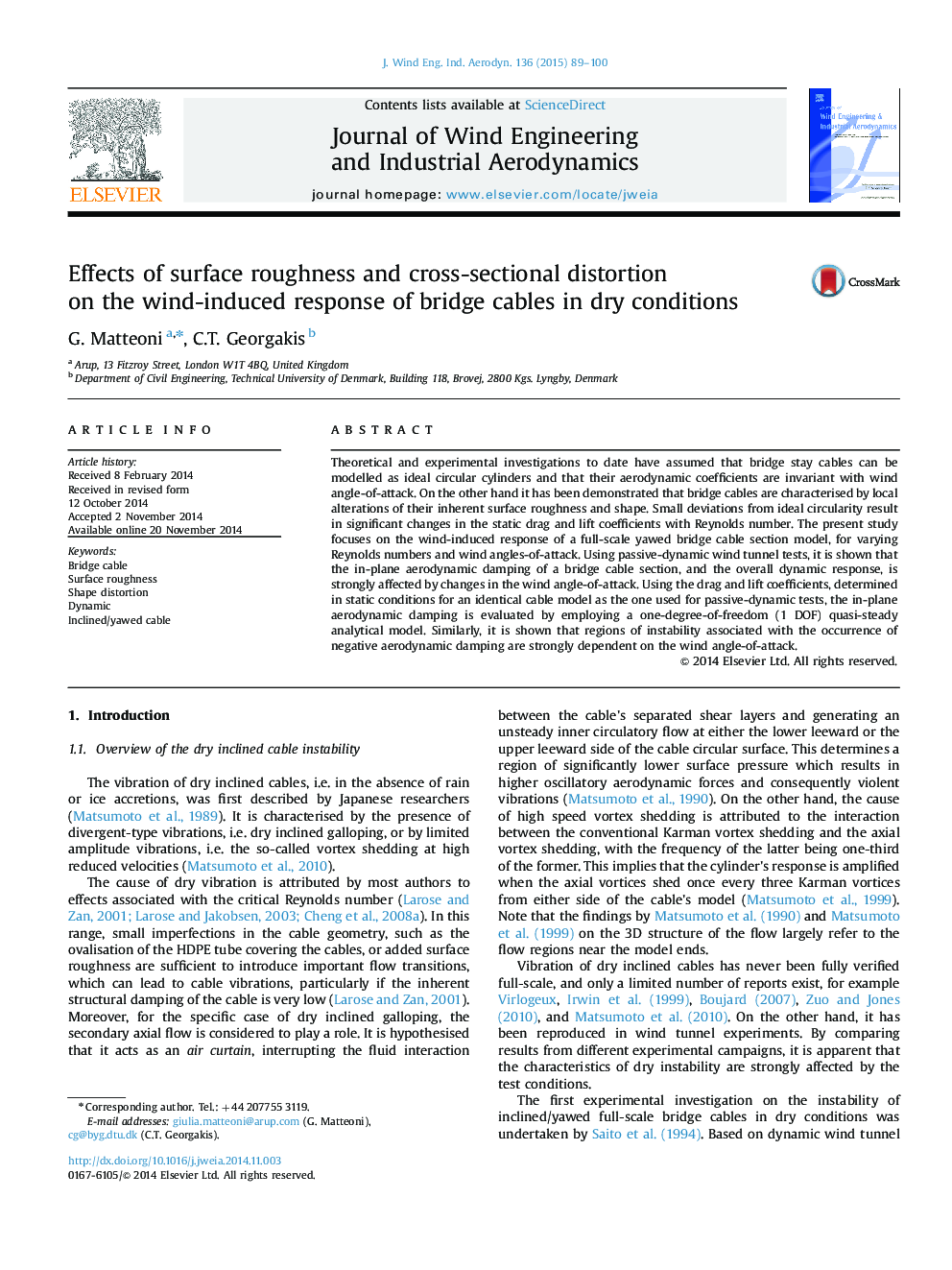| Article ID | Journal | Published Year | Pages | File Type |
|---|---|---|---|---|
| 292466 | Journal of Wind Engineering and Industrial Aerodynamics | 2015 | 12 Pages |
Theoretical and experimental investigations to date have assumed that bridge stay cables can be modelled as ideal circular cylinders and that their aerodynamic coefficients are invariant with wind angle-of-attack. On the other hand it has been demonstrated that bridge cables are characterised by local alterations of their inherent surface roughness and shape. Small deviations from ideal circularity result in significant changes in the static drag and lift coefficients with Reynolds number. The present study focuses on the wind-induced response of a full-scale yawed bridge cable section model, for varying Reynolds numbers and wind angles-of-attack. Using passive-dynamic wind tunnel tests, it is shown that the in-plane aerodynamic damping of a bridge cable section, and the overall dynamic response, is strongly affected by changes in the wind angle-of-attack. Using the drag and lift coefficients, determined in static conditions for an identical cable model as the one used for passive-dynamic tests, the in-plane aerodynamic damping is evaluated by employing a one-degree-of-freedom (1 DOF) quasi-steady analytical model. Similarly, it is shown that regions of instability associated with the occurrence of negative aerodynamic damping are strongly dependent on the wind angle-of-attack.
